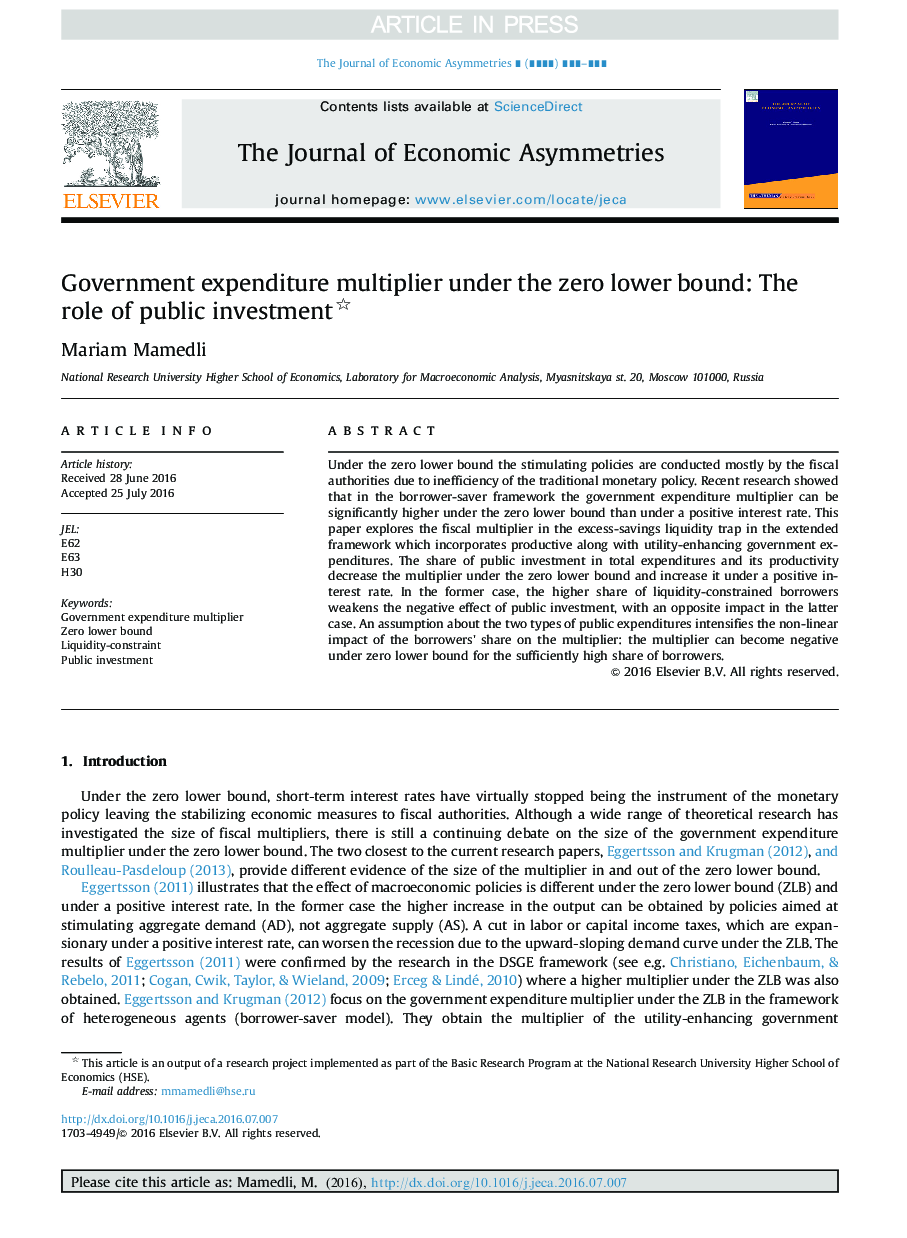| Article ID | Journal | Published Year | Pages | File Type |
|---|---|---|---|---|
| 5097683 | The Journal of Economic Asymmetries | 2016 | 9 Pages |
Abstract
Under the zero lower bound the stimulating policies are conducted mostly by the fiscal authorities due to inefficiency of the traditional monetary policy. Recent research showed that in the borrower-saver framework the government expenditure multiplier can be significantly higher under the zero lower bound than under a positive interest rate. This paper explores the fiscal multiplier in the excess-savings liquidity trap in the extended framework which incorporates productive along with utility-enhancing government expenditures. The share of public investment in total expenditures and its productivity decrease the multiplier under the zero lower bound and increase it under a positive interest rate. In the former case, the higher share of liquidity-constrained borrowers weakens the negative effect of public investment, with an opposite impact in the latter case. An assumption about the two types of public expenditures intensifies the non-linear impact of the borrowers' share on the multiplier: the multiplier can become negative under zero lower bound for the sufficiently high share of borrowers.
Related Topics
Social Sciences and Humanities
Economics, Econometrics and Finance
Economics and Econometrics
Authors
Mariam Mamedli,
